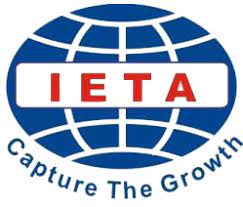FROM RECOUNT TO NARRATIVE: DEVELOPING WRITING SKILLS AND GAINING CONFIDENCE
 ),
), (1) English Department FBS Universitas Negeri Padang
 Corresponding Author
Corresponding Author
Copyright (c) 2017 Lingua Didaktika: Jurnal Bahasa dan Pembelajaran Bahasa
DOI : https://doi.org/10.24036/ld.v10i2.7446
Full Text:
 Language : en
Language : en
Abstract
DARI TEKS RECOUNT KE NARATIF: MENGEMBANGKAN KETERAMPILAN MENULIS DAN MENINGKATKAN KEPERCAYAAN DIRI
This article seeks to explain the use of recount text to help students develop their narrative text. The idea was induced by students’ common problems in writing a narrative and teachers’ difficulties in scaffolding their students to write that genre. As recount and narrative genres share similar features, it is argued that using a recount as a basis, students will be able to produce a narrative more easily. Three main topics addressed here include a brief theoretical synthesis of narrative and recount, the procedures of teaching to write narrative from recount, and a brief report of a classroom-based study using the strategy. The result of the study shows that the strategy could help the students produce their narratives well. In fact, they could produce stories of various themes, interesting conflicts, and ending. In addition, their language became more descriptive which made their description more vivid. Step by step teaching procedure is explained in details and is coupled with examples. It is expected that steps can be easily understood and applied by teachers.
Keywords: Recount, Narrative, Writing, Confidence
Abstrak
Artikel ini menjelaskan penggunaan teks recount untuk membantu siswa dalam mengembangkan teks naratif mereka. Gagasan itu diinduksi oleh masalah umum siswa dalam menulis sebuah narasi dan kesulitan guru dalam perancah siswa mereka untuk menulis genre tersebut. Karena genre recount dan naratif memiliki fitur serupa, sehingga dapat dipahami bahwa menggunakan teks recount memungkinkan sebagai dasar bagi siswa untuk menghasilkan teks narasi dengan lebih mudah. Tiga topik utama yang dibahas di sini mencakup sintesis teoretis narasi dan teks recount, prosedur pengajaran untuk menulis narasi dari teks recount, dan laporan singkat sebuah studi berbasis kelas dengan menggunakan strategi tersebut. Hasil penelitian menunjukkan bahwa strategi tersebut dapat membantu siswa menghasilkan narasi mereka dengan baik. Buktinya, mereka bisa menghasilkan cerita dari berbagai tema, konflik menarik, dan penutup. Selain itu, bahasa mereka menjadi lebih deskriptif yang membuat deskripsi mereka lebih jelas. Langkah demi langkah prosedur mengajar dijelaskan secara rinci dan digabungkan dengan contoh. Diharapkan langkah-langkah tersebut dapat dengan mudah dipahami dan diterapkan oleh guru.
Kata Kunci: Recount, Narrative, Writing, Confidence
Keywords
References
Anwar, D. & Wahyuni, D.(2016). Writing Anxiety yang dihadapi oleh Mahasiswa Prodi Sastra Inggris, FBS. Laporan Penelitian.
Butt, D., R. Fahey, S. Feez, S. Spinks, & C. Yallop (2000). Using Functional Grammar: An explorer’s Guide. Sydney, NSW: National Centre for English Language Teaching and Research.
Cheng, Y. (2002). Factors associated with foreign language anxiety. Foreign Language Annals, 35 (): 647-656
Clabough, C. (2014). Creative Writing. New York: Penguin Group (USA) Inc.
Dacwang, CW. (2014). L2 Writing Anxiety of the Students of the Maritime Academy of Asia and the Pacific. International Journal of Arts & Sciences. 7 (3): 469-483
Devitt, A.J.(2004). Writing Genres. Carbondale: Southern Illinois University Press.
Figueiredo, Debora, de Carvalho.(2009). Narrative and Identity Formation: An Analysis of Media Personal Accounts from Patients of Cosmetic Plastic Surgery. In Bazerman, C. , Adair Bonini, and Debora figueiredo (Eds.), Genre in a changing world, pp. 255-276. Collorado: Parlor Press, LLC.
Graves, D.H. (1983). Writing: Teachers & Children at Work. Portsmouth, NH: Heinemann Educational Books.
Hammond, J. (2001). Scaffolding in action. In J. Hammond (Ed.), Scaffolding: Teaching and Learning in Language and Literacy Education, pp. 32-48. Newton, NSW: Primary English Teaching Assciation.
Hinkel, E. (1997). Indirectness in L1 and L2 Academic Writing. Jpournal of Pragmatics, 27 (3), pp. 360-386.
Hinkel, E. (2008). Second Language Writers’ Text: Linguistic and Rhetorical Features. New Jersey: Lawrence Erlbaum Associates.
Macken-Horarik, M. (2002). “Something to Shoot for”: A Systemic Functional Approach to Teaching Genre in Secondary School Science. In Ann, M.J. (Ed.), Genre in the Classroom: Multiple Perspectives, pp. 17-42. Marwah, New Jersey: Lawrence Erlbaum Associates.
Pimsarn, P. (2013). Efl Students' Writing Apprehension. International Journal of Arts & Sciences. 6 (4): 99-109.
Rothery, J. and M. Stenglin. (1997). Entertaining and instructing: exploring experience through story. In F. Christie and J.R. Martin (Eds.), Genre and Institutions: Social processes in the workplace and school. London: Continuum, pp.231-263.
 Article Metrics
Article Metrics
 Abstract Views : 996 times
Abstract Views : 996 times
 PDF Downloaded : 343 times
PDF Downloaded : 343 times
Refbacks
- There are currently no refbacks.
Copyright (c) 2017 Lingua Didaktika: Jurnal Bahasa dan Pembelajaran Bahasa

This work is licensed under a Creative Commons Attribution-NonCommercial 4.0 International License.









